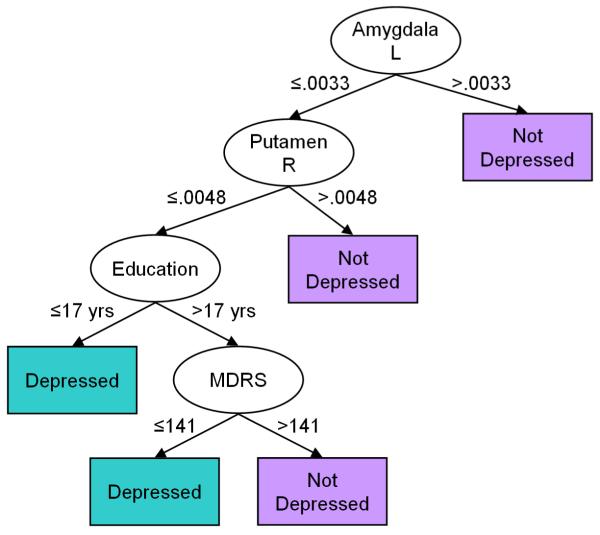Fig. 3.
A Hypothetical Decision Tree for Classifying an Individual as Depressed or Healthy using four features: the volume of the left amygdala and right putamen, educational level, and Mattis Dementia Rating Scale (MDRS). These four features are computed and used to classify a new individual by traversing down the tree. Starting at the root node, the node labeled Amygdala L, if the volume of the left amygdala is greater than the specified threshold then the individual is classified as healthy and the algorithm stops. Otherwise, it moves down along the edge labeled ≤ .0033 to the next node and compares the volume of the right putamen to the threshold: If the volume is greater than the threshold then the algorithm moves to the leaf node labeled Not Depressed and the individual is classified as healthy. Otherwise the process is repeated until a leaf node is reached and a diagnosis is assigned to the individual. The decision tree was obtained by personal communications with the authors(Dutta et al., 2007). L, Left; R, Right; MDRS, Mattis Dementia Rating Scale.

